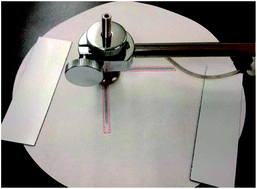Paper substrate modification for rapid capillary flow in microfluidic paper-based analytical devices
Abstract
The development of microfluidic paper-based analytical devices is the most promising emerging research globally, due to its main advantage of spontaneous liquid transport. Though many fabrication and detecting methods have been developed, there remain several challenges to overcome. In this paper, we present the findings of a simple and quick fabrication method that was developed by printing a modified poly(styrene-co-acrylic acid) solution using an ink jet printer. The formed hydrophobic barrier was then analyzed using a confocal laser scanning microscope and a scanning electron microscope. To overcome the problem of liquid analyte evaporation during long-distance delivery and long-time analysis, experiments were conducted on various conventional parameters in papermaking processes. To examine the influence of internal channel width, fiber orientation, plasma-etching treatment, beating degree and calendering, volumetric flow rates of channels were measured using an automatic scanning absorptometer. Consequently, internal channel width had no effect on the flow rate, and channels aligned along the machine direction exhibited higher volumetric and longitudinal flow rates than they did in the cross direction. Plasma-etching treatment was found to increase the longitudinal flow rate, but the volumetric flow rate remained virtually the same. It was also found that higher beating degrees decreased the flow rates, likely caused by the decreased radius of pores between fibers. Finally, it was found that calendering affected the flow rates only marginally.


 Please wait while we load your content...
Please wait while we load your content...